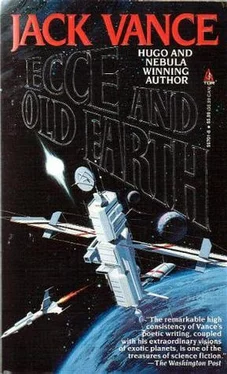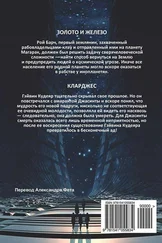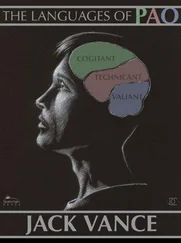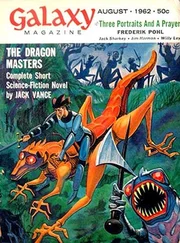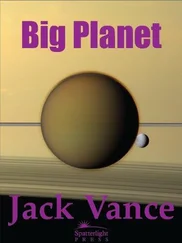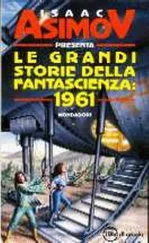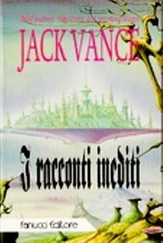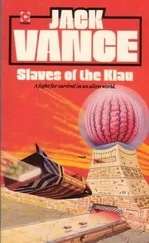Jack Vance. Ecce and Old Earth
I. THE PURPLE ROSE SYSTEM
(Excerpted from: THE WORLDS OF MAN, 48th edition.)
Halfway along the Perseid Arm near the edge of the Gaen Reach, a capricious swirl of galactic gravitation has caught up ten thousand stars and sent them streaming off at a veer, with a curl and a flourish at the tip. This strand of stars is Mircea’s Wisp.
To the side of the curl, at seeming risk of wandering away into the void, is the Purple Rose System, comprising three stars: Lorca, Sing, and Syrene. Lorca, a white dwarf and Sing, a red giant, orbit close around each other: a portly pink-faced old gentleman waltzing with a dainty little maiden dressed in white. Syrene, a yellow-white star of ordinary size and luminosity, circles the gallivanting pair at a discrete distance.
Syrene controls three planets, including Cadwal, an Earth-like world seven thousand miles in diameter, with close to Earth-normal gravity.
(A list and analysis of physical indices is here omitted.)
II. THE NATURALIST SOCIETY
Cadwal was first explored by the locator R. J. Neirmann, a member of the Naturalist Society of Earth. His report prompted the Society to dispatch an official expedition to Cadwal, which, upon its return to Earth, recommended that Cadwal be protected as a conservancy, or nature preserve, secure forever from human settlement and commercial exploitation.
To this end, the Society registered the world in its own name, and after securing the Certificate of Registration found itself in sole and perpetual tenancy of Cadwal Planet with no further formalities other than periodic renewals of the certificate; a task devolving upon the secretary of the Society.
The Society issued an immediate decree of conservancy: the Great Charter to which were attached the Regulations of Conservancy: the basic political instrument of Cadwal. Charter, By-laws and Certificates were stored in the Society’s archival vaults, and an administrative staff dispatched to Cadwal.
III. THE WORLD CADWAL
The landscapes of Cadwal were endlessly various spectacular and almost always — to human perceptions — pleasant, or inspiring, or awesome, or idyllically beautiful Tourists who made the rounds of the wilderness always left Cadwal with regret and many returned again and again.
The flora and fauna were approximately as diverse as those of Old Earth, which is to say that they challenged generations of research biologists and taxonomists with profusion of their species. Many of the larger beasts were savage; others exhibited aspects of intelligence and what seemed to be an aesthetic capability. Certain varieties of andrils used a spoken language which, try as they might, linguists were unable to interpret.
The three continents of Cadwal were Ecce, Deucas and Throy. They were separated by expanses of empty ocean, unbroken by islands or smaller masses of land, with a few trifling exceptions.
Ecce, long and narrow lay along the equator a flat tract of swamp and jungle, netted by sluggish rivers. Ecce palpitated with heat, stench, color and ravenous vitality. Ferocious creatures everywhere preyed upon one another, and made the land unsuitable for human settlement; the Naturalist had attempted not even a wilderness lodge on Ecce. Three objects alone broke the flat landscape: one dormant and a pair of active volcanoes.
The early explorers gave Ecce little serious attention; no more did the later scholars, and Ecce, after the first flurry of biological and topographical surveys, remained for the most part a land abandoned and unknown.
Deucas, five times as large as Ecce, occupied most of the North Temperate Zone on the opposite side of the planet, with Cape Journal, the continents southernmost extremity at the end of a long narrow peninsula which trust a thousand miles below the equator. The fauna of Deucas, neither as grotesque nor as monstrous as that of Ecce, was yet, in many cases, savage and formidable, and included several non-intelligent species. The flora tended to resemble that of old Earth, to such effect that the early agronomists were able to introduce useful terrestrial species at Araminta Station: bamboo, coconut palms, wine-grapes and fruit trees without fear of an ecological disaster [1] The biological techniques for introducing nest species into alien surroundings without danger to the host environment had long been perfected.
.
Throy, to the south of Deucas and about equal in area to Ecce, extended from the polar ice well into the South Temperate Zone. The terrain of Throy was the most dramatic of Cadwal. Crags leaned over chasms; dark forests roared in the wind.
Three small islands, all ancient sea-volcanoes, were located off the east coast of Deucas. These were Lutwen Atoll, Thurben Island and Ocean Island. Elsewhere the oceans spread open and empty around the globe.
IV. ARAMINTA STATION
An enclave of a hundred square miles had been established on the east coast of Deucas, halfway between Cape Journal to the south and Marmion Head to the north. Here was Araminta station, the agency which monitored the conservancy and enforced the terms of the Charter. Six bureaus performed the necessary work:
Bureaus
A: Records and statistics.
B: Patrols and surveys: Police and security services.
C: Taxonomy, cartography, natural sciences.
D: Domestic services.
E: Fiscal affairs: exports and imports
F: Visitors accommodations.
The original six superintendents were Deamus Wook, Shirry Clattuc, Saul Diffin, Claude Offaw, Marvell Veder, and Condit Laverty. Each was allowed a staff not to exceed forty persons which they all recruited from family and guild kinships, and which brought to the early administration a cohesion which otherwise might have been lacking After many centuries, much had changed but much remained the same. The Charter prevailed as law of the land, though certain factions were intent upon modifying its terms. Others — notably the Yips of Lutwen Atoll — paid no heed whatever to the Charter. At Araminta station, the original rude encampment had become a settlement dominated by six palatial edifices, where lived the descendants of the Wooks, Offaws, Clattucs, Diffins, Veders and Lavertys.
As time passed, each House developed a distinctive personality, which its residents shared, so that the wise Wooks differed from the flippant Diffins, as did the cautious Offaws from the reckless Clattucs.
The station early acquired a hotel to house its visitors; also an airport, a hospital, schools and a theater: the ‘Orpheum'. When subsidies from society headquarters on Old Earth dwindled and presently stopped altogether, the need for foreign exchange became urgent. Vineyards planted at the back of the enclave began to produce fine wines for export, and tourists were encouraged to visit any or all of the wilderness lodges, which were established at special sites and managed so as to avoid interaction with the environment.
Over the centuries, certain problems became acute. How so many enterprises could be staffed by a complement of only two hundred and forty persons? Elasticity was necessarily the answer. First, collaterals [2] Collateral: only forty Wooks, Offaws, Clattucs, Diffins, Veders and Lavertys could be reckoned Cadwal Agents’. The excess became ‘collaterals’ (co-Wooks, co-Lavertys, co-Clattucs, etcetera), and upon their twenty-first birthday were required to leave the house of their birth and seek their fortune elsewhere. The occasion was fraught always with heartbreak, sometimes fury and, not infrequently, suicide. The situation was criticized as ‘brutal’ and 'heartless,' especially among the LPFers of Stroma, but no remedy or better method could be devised within the intent of the Charter which defined Araminta Station as an administrative agency and a business-place, not a residential settlement.
were allowed to accept middle-status positions at the station.
Читать дальше
